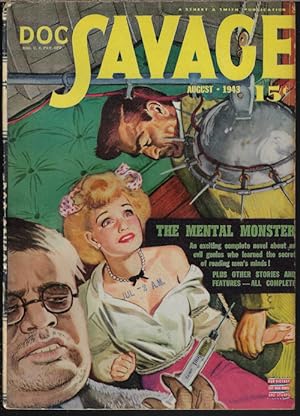Savage Storm (2 results)
Product Type
- All Product Types
- Books (1)
- Magazines & Periodicals (1)
- Comics
- Sheet Music
- Art, Prints & Posters
- Photographs
- Maps
-
Manuscripts &
Paper Collectibles
Condition
- All Conditions
- New
- Used
Binding
- All Bindings
- Hardcover
- Softcover
Collectible Attributes
- First Edition (1)
- Signed
- Dust Jacket
- Seller-Supplied Images (1)
- Not Printed On Demand
Seller Location
Seller Rating
-
Reach to the Unknown: The Trinity Story July 16, 1945; Special anniversary edition of The ATOM, Los Alamos Scientific Laboratory, July 16, 1965, Volume 2, Number 8
Published by Los Alamos Scientific Laboratory, University of California, 1965
Seller: Ground Zero Books, Ltd., Silver Spring, MD, U.S.A.
First Edition
Wraps. Condition: good. This document measures approximately 8.5" by 10.3/4". 46 pages plus covers. It contains 70 black and white photographs of the Trinity test and Los Alamos personnel. This issue of The ATOM, which commemorates the twenty anniversary of the Trinity test of July 16, 1945, is told in two parts: Part I, the story of the Trinity test, and Part II, the story of how the bomb was built. Trinity was the code name of the first detonation of a nuclear device. It was conducted by the United States Army at 5:29 a.m. on July 16, 1945, as part of the Manhattan Project. The test was conducted in the Jornada del Muerto desert about 35 miles (56 km) southeast of Socorro, New Mexico, on what was then the USAAF Alamogordo Bombing and Gunnery Range, now part of White Sands Missile Range. The only structures originally in the vicinity were the McDonald Ranch House and its ancillary buildings, which scientists used as a laboratory for testing bomb components. A base camp was constructed, and there were 425 people present on the weekend of the test. The code name "Trinity" was assigned by J. Robert Oppenheimer, the director of the Los Alamos Laboratory, inspired by the poetry of John Donne. The test was of an implosion-design plutonium device, informally nicknamed "The Gadget", of the same design as the Fat Man bomb later detonated over Nagasaki, Japan, on August 9, 1945. The complexity of the design required a major effort from the Los Alamos Laboratory, and concerns about whether it would work led to a decision to conduct the first nuclear test. The test was planned and directed by Kenneth Bainbridge. Fears of a fizzle led to the construction of a steel containment vessel called Jumbo that could contain the plutonium, allowing it to be recovered, but Jumbo was not used. A rehearsal was held on May 7, 1945, in which 108 short tons (96 long tons; 98 t) of high explosive spiked with radioactive isotopes were detonated. The Gadget's detonation released the explosive energy of about 22 kilotons of TNT (92 TJ). Observers included Vannevar Bush, James Chadwick, James Conant, Thomas Farrell, Enrico Fermi, Richard Feynman, Leslie Groves, Robert Oppenheimer, Geoffrey Taylor, Richard Tolman and John von Neumann. The test site was declared a National Historic Landmark district in 1965, and listed on the National Register of Historic Places the following year. Presumed First Edition, First printing thus.
-
DOC SAVAGE: August, Aug. 1943 ("The Mental Monster")
Published by Street & Smith, NY, 1943
Magazine / Periodical
SingleIssueMagazine. Condition: Very Good+ to Near Fine. Vol. XXI, No. 6. Pulp magazine. [Edited by John Manovic.] Cover art by Emery Clarke for "The Mental Monster" (novel) by Kenneth Robeson. Includes "Death on the Danube" by Stuart Friedman; "Mystery Island" by Wallace Brooker; "Objective Reached" by Norman A. Daniels; "Assignment in Casablanca" by William G. Bogart; "Hot Pilot" by John Stuart Douglas. Features and Departments: "Johnny Doughboy in Ireland" by Jack Storm; "Letters from Readers"; "Editor's Page"; "Doc Savage Award". Illustratied by kramer, Schroder, and others. Short tear at spine head with a little wear at ends; date-stamp on front; tanning.



